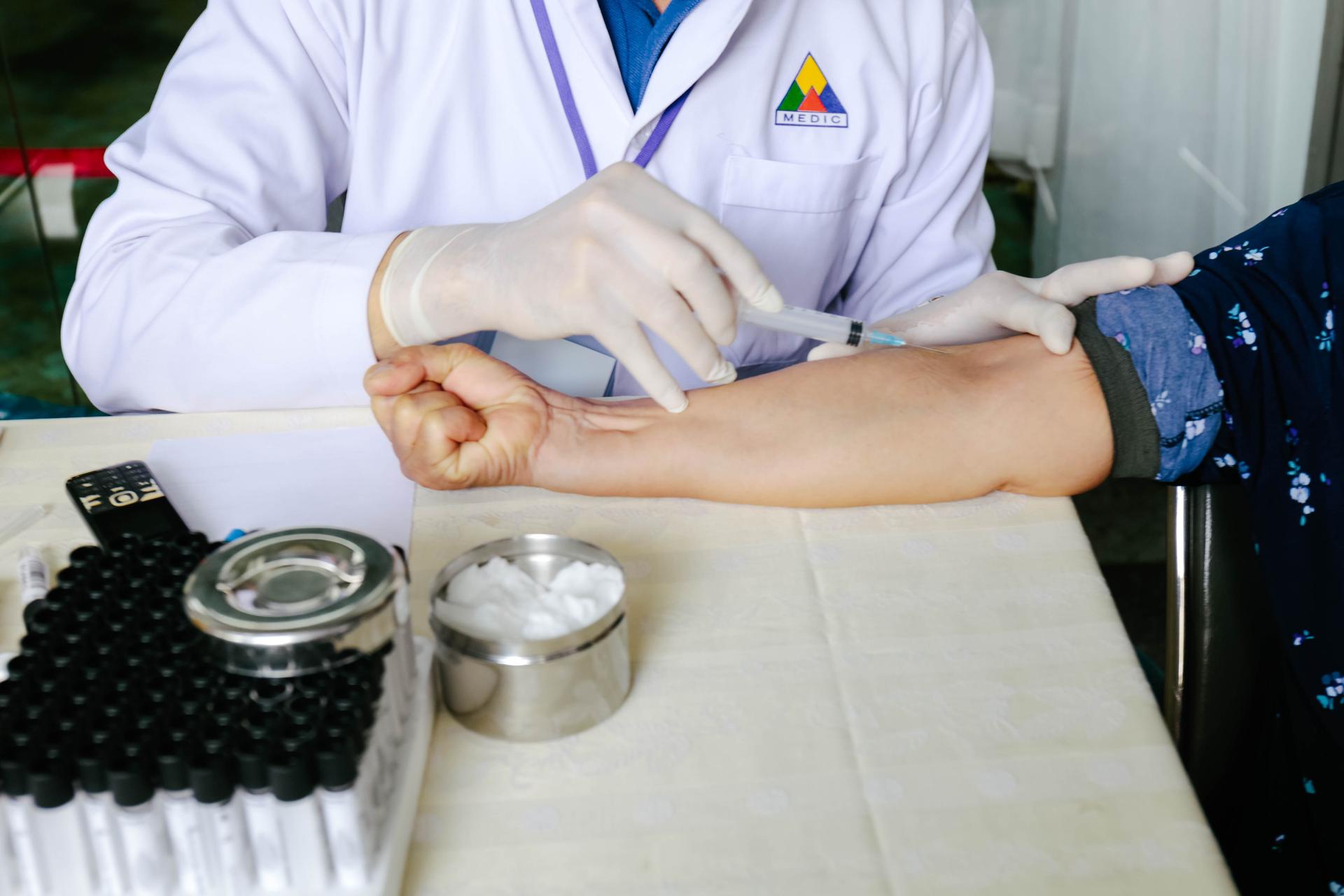3 Easy Facts About Northeast Medical Institute - New Haven Campus Phlebotomy Course & Cna Class Described
3 Easy Facts About Northeast Medical Institute - New Haven Campus Phlebotomy Course & Cna Class Described
Blog Article
What Does Northeast Medical Institute - New Haven Campus Phlebotomy Course & Cna Class Do?
Table of ContentsAn Unbiased View of Northeast Medical Institute - New Haven Campus Phlebotomy Course & Cna ClassExcitement About Northeast Medical Institute - New Haven Campus Phlebotomy Course & Cna ClassNortheast Medical Institute - New Haven Campus Phlebotomy Course & Cna Class Fundamentals Explained4 Simple Techniques For Northeast Medical Institute - New Haven Campus Phlebotomy Course & Cna ClassThe Single Strategy To Use For Northeast Medical Institute - New Haven Campus Phlebotomy Course & Cna ClassLittle Known Facts About Northeast Medical Institute - New Haven Campus Phlebotomy Course & Cna Class.
The usage of such tools need to be accompanied by other infection avoidance and control practices, and training in their usage. Not all safety and security tools are relevant to phlebotomy. Before choosing a safety-engineered device, individuals should extensively investigate available devices to determine their ideal usage, compatibility with existing phlebotomy techniques, and efficiency in securing team and patients (12, 33).For setups with low sources, cost is a motoring consider procurement of safety-engineered tools - CNA Classes. Where safety-engineered gadgets are not readily available, skilled use of a needle and syringe serves. Unintended exposure and specific info regarding a case should be videotaped in a register. Assistance services ought to be advertised for those who undertake unintended direct exposure.
In the blood-sampling room for an outpatient department or facility, offer a comfy reclining sofa with an arm rest.
7 Simple Techniques For Northeast Medical Institute - New Haven Campus Phlebotomy Course & Cna Class
Ensure that the signs for blood sampling are clearly specified, either in a written protocol or in recorded instructions (e.g. in a research laboratory kind). At all times, comply with the methods for infection prevention and control provided in Table 2.2. Infection prevention and control practices. Collect all the devices needed for the procedure and area it within secure and easy reach on a tray or cart, ensuring that all the things are clearly visible.
Present yourself to the patient, and ask the patient to mention their complete name. Check that the laboratory kind matches the individual's identity (i.e. match the patient's information with the lab kind, to make sure exact identification).
Make the patient comfy in a supine setting (if possible). Area a tidy paper or towel under the patient's arm. Discuss the examination to be done (see Annex F) and acquire spoken permission. The client has a right to refuse an examination at any type of time before the blood tasting, so it is essential to make certain that the individual has understood the procedure.
Top Guidelines Of Northeast Medical Institute - New Haven Campus Phlebotomy Course & Cna Class
Expand the person's arm and examine the antecubital fossa or forearm. Find a blood vessel of an excellent dimension that is visible, straight and clear.
DO NOT place the needle where blood vessels are diverting, since this raises the chance of a haematoma. The capillary needs to show up without using the tourniquet. Locating the blood vessel will certainly aid in determining the correct dimension of needle. Apply the tourniquet concerning 45 finger sizes over the venepuncture site and re-examine the vein.
Haemolysis, contamination and visibility of intravenous fluid and medicine can all modify the results (39. Nursing team and medical professionals may access main venous lines for samplings complying with protocols. Nevertheless, specimens from main lines bring a danger of contamination or wrong research laboratory examination results (https://peatix.com/user/22874222/view). It is acceptable, however not ideal, to attract blood samplings when initial introducing an in-dwelling venous tool, before connecting the cannula to the intravenous liquids.
Northeast Medical Institute - New Haven Campus Phlebotomy Course & Cna Class Can Be Fun For Anyone
Failing to enable sufficient contact time raises the threat of contamination. DO NOT touch the cleaned up site; in specific, DO NOT put a finger over the capillary to direct the shaft of the exposed needle.
Ask the person to create a fist so the blood vessels are much more popular. Enter the blood vessel swiftly at a 30 degree angle or much less, and continue to introduce the needle along the vein at the most convenient angle of entrance - Phlebotomy Classes. When sufficient blood has actually been gathered, release the tourniquet BEFORE withdrawing the needle
Get This Report on Northeast Medical Institute - New Haven Campus Phlebotomy Course & Cna Class
Take out the needle carefully and apply mild pressure to the site with a tidy gauze or completely dry cotton-wool ball. Ask the client to hold the gauze or cotton wool in position, with the arm extended and raised. Ask the patient NOT to flex the arm, because doing so triggers a haematoma.

Northeast Medical Institute - New Haven Campus Phlebotomy Course & Cna Class Fundamentals Explained
Do not press the syringe bettor since added pressure increases the danger of haemolysis. Where feasible, maintain the tubes in a rack and relocate the shelf in the direction of you. Inject downwards right into the appropriate coloured stopper. DO NOT eliminate the stopper because it will launch the vacuum. If the sample tube does not have a rubber stopper, infuse incredibly gradually right into the tube as decreasing the pressure and speed utilized to transfer the sampling decreases the danger of haemolysis.

Report this page